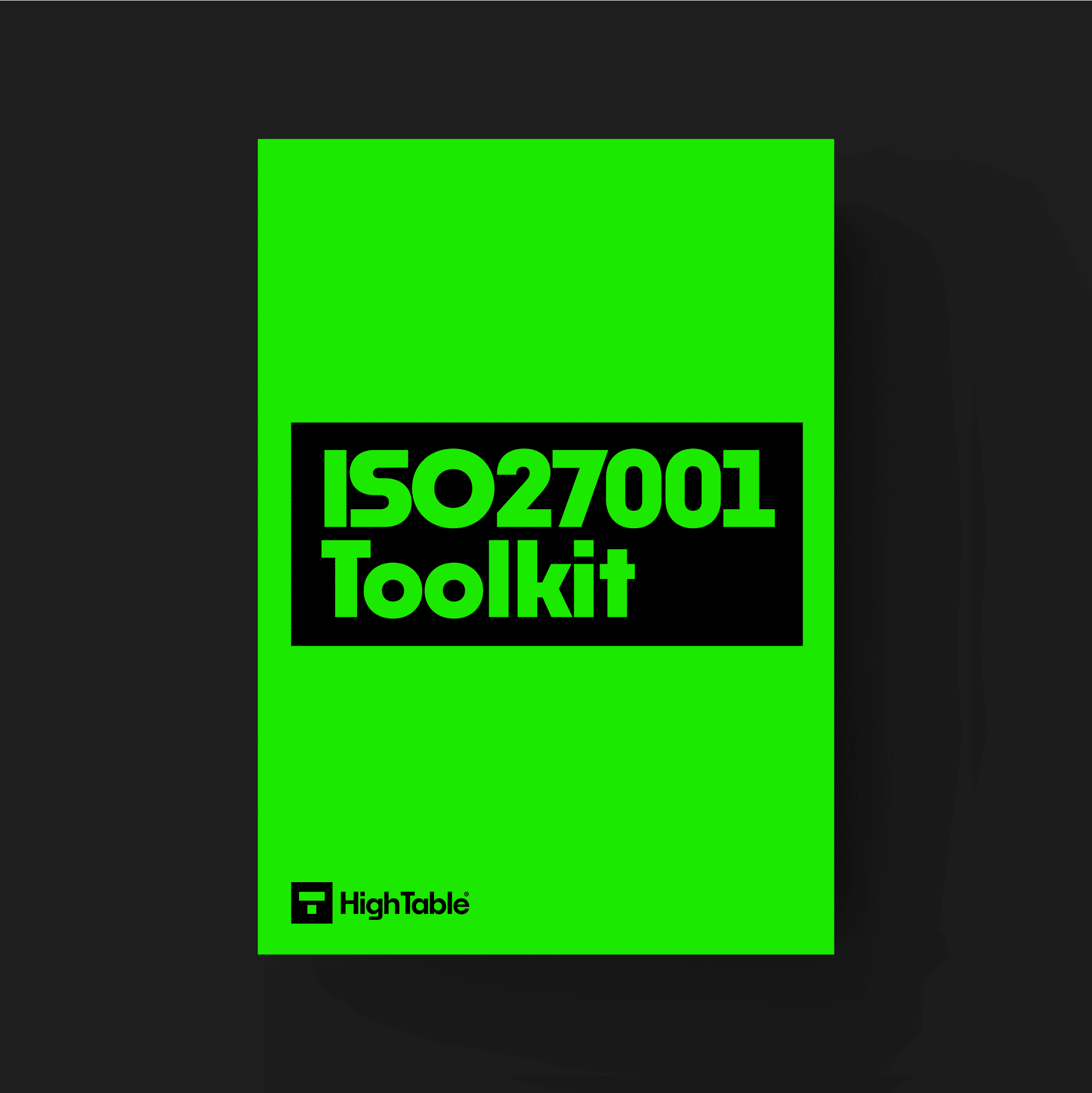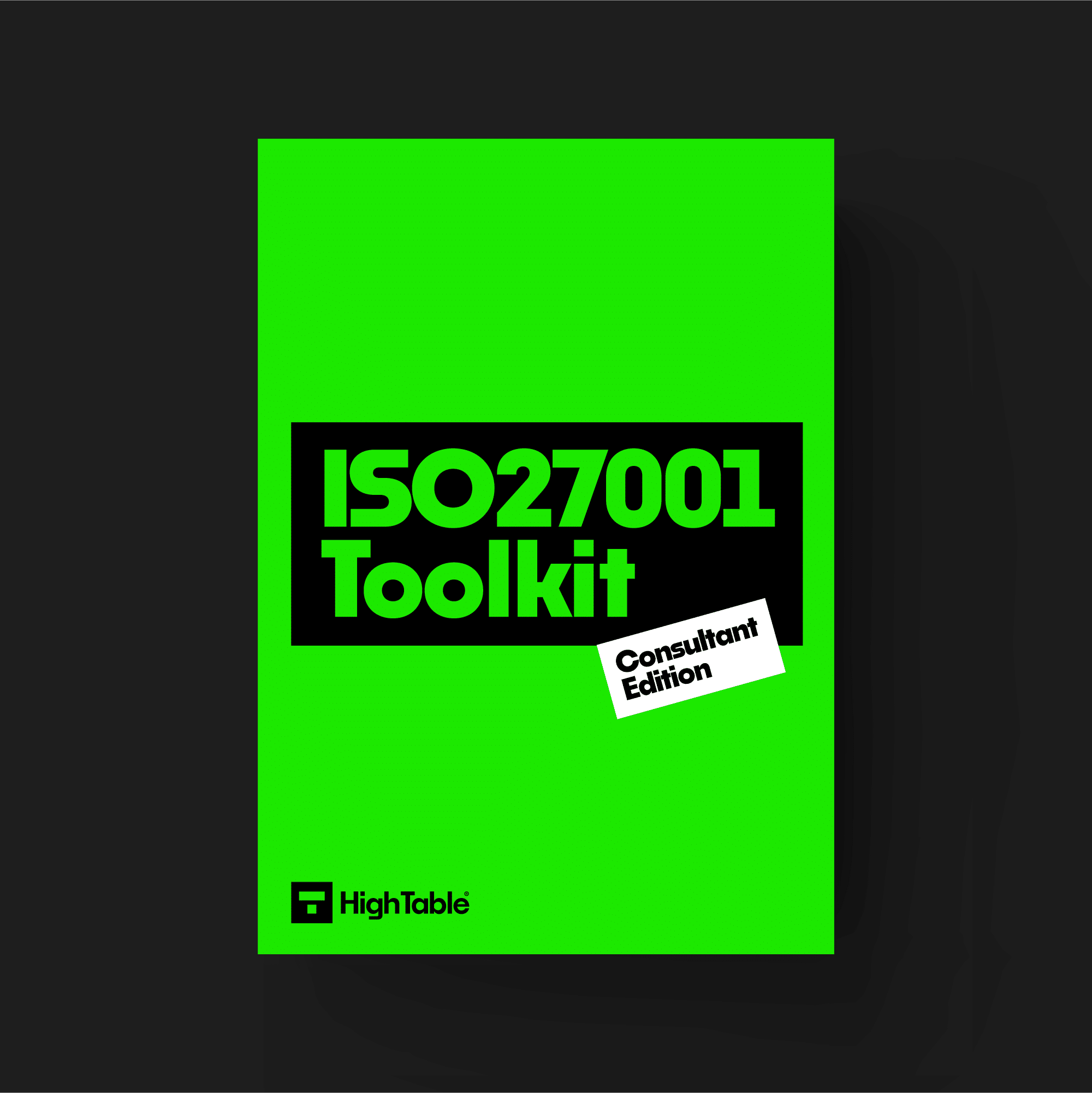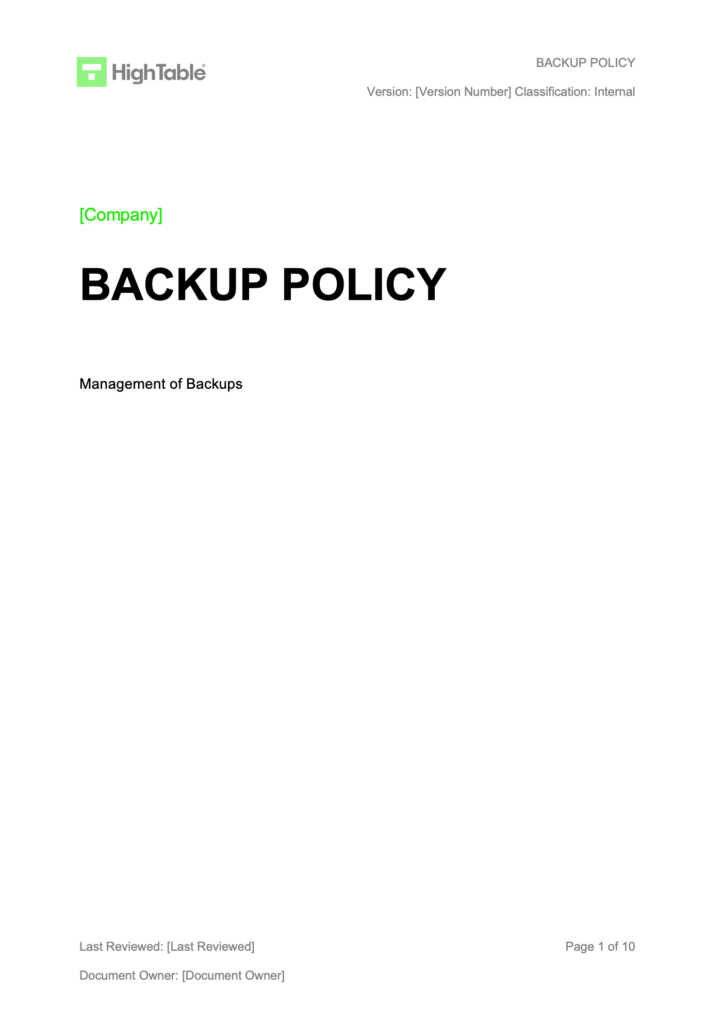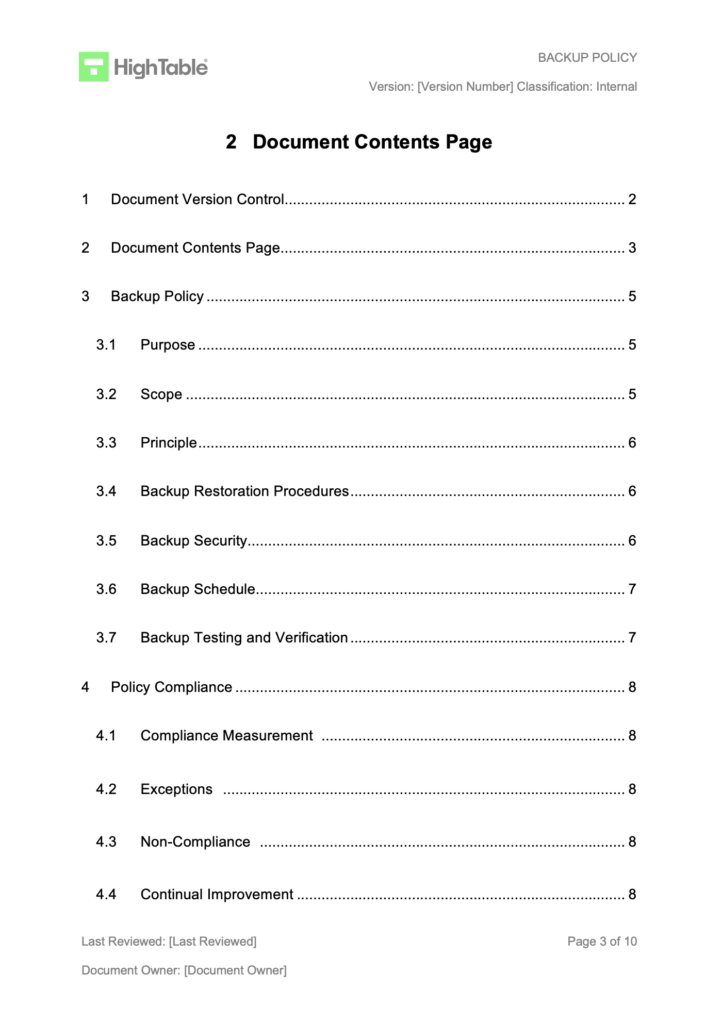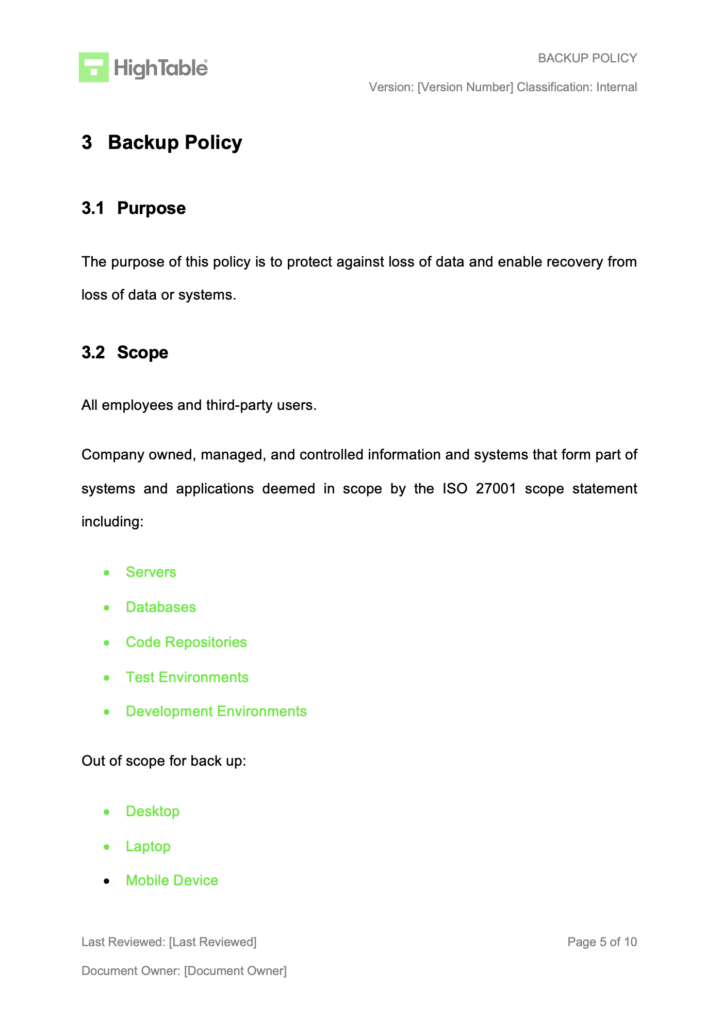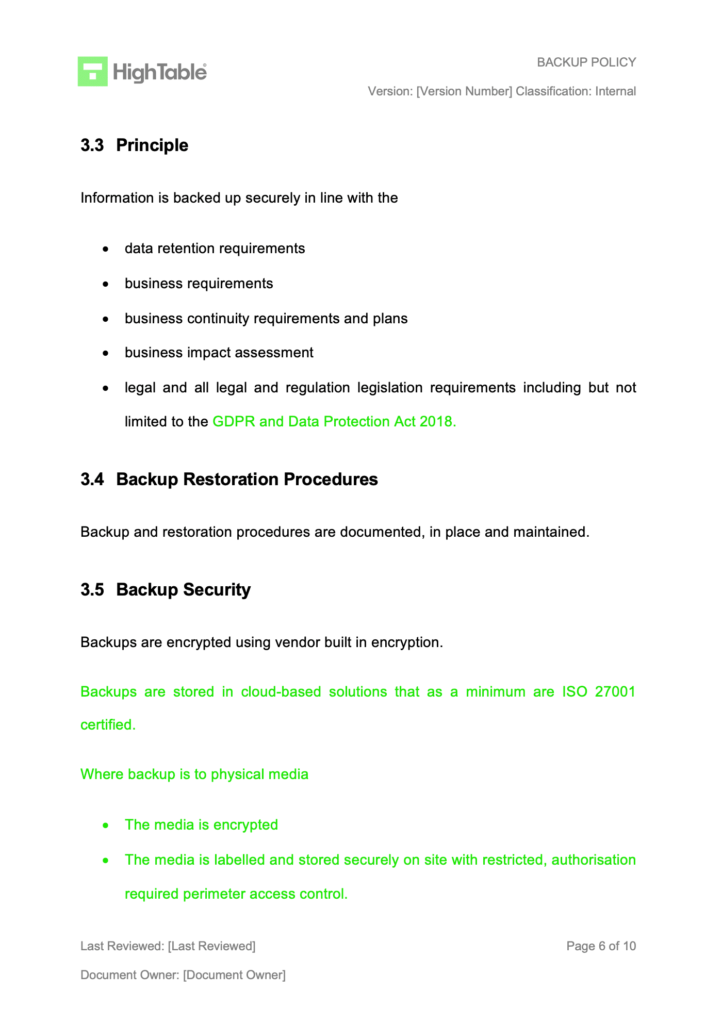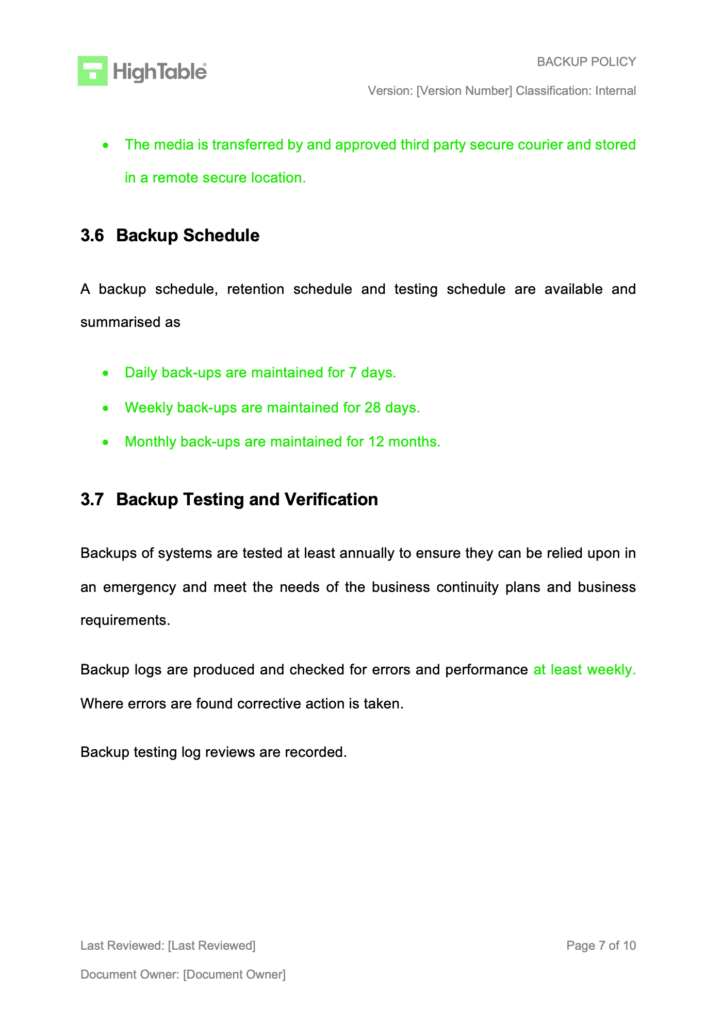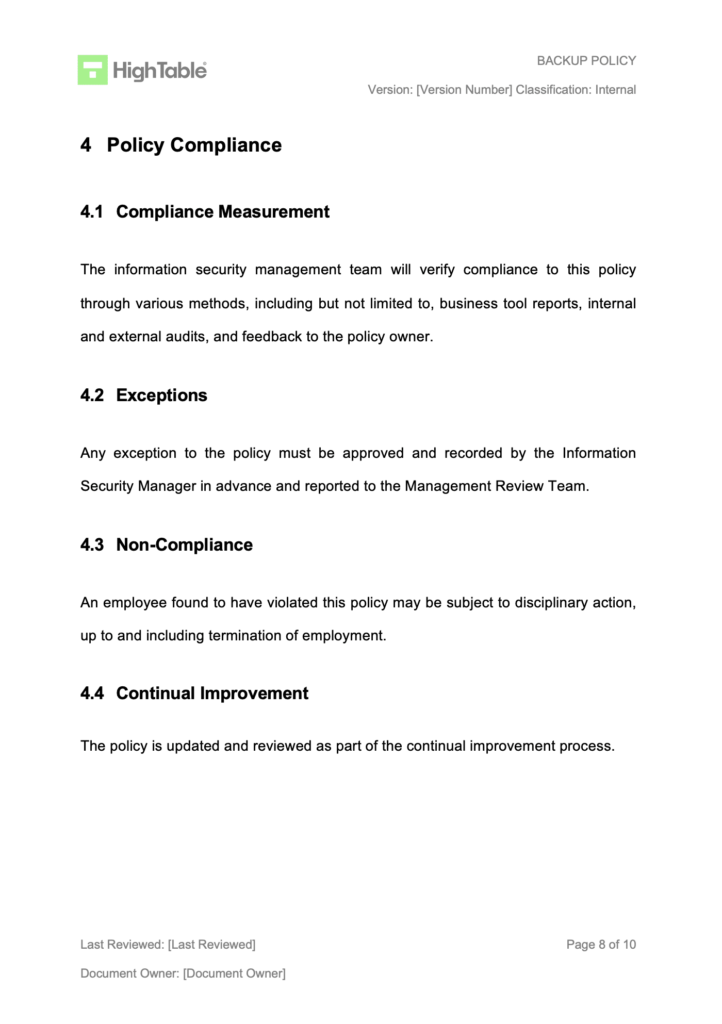An ISO 27001 Backup Policy is your company’s simple plan for making copies of your important data. It’s like having an extra key for your house—just in case you lose the first one. This policy ensures that if something goes wrong, you can quickly get your information back and get back to work.
Table of contents
- What is it?
- Applicability to Small Businesses, Tech Startups, and AI Companies
- ISO 27001 Backup Policy Template
- Why you need it
- When you need it
- Who needs it?
- Where you need it
- How to write it
- How to implement it
- Examples of using it for small businesses
- Examples of using it for tech startups
- Examples of using it for AI companies
- How the ISO 27001 toolkit can help
- Information security standards that need it
- List of relevant ISO 27001:2022 controls
- ISO 27001 Backup Policy Example
- ISO 27001 Backup Policy FAQ
What is it?
This policy is a set of rules that tells you and your team exactly how to back up your data. It covers what data to back up, how often to do it, where to store the copies, and who is in charge of the process. Its main purpose is to protect your information from things like hardware failure, natural disasters, or even a simple mistake.
Applicability to Small Businesses, Tech Startups, and AI Companies
This policy is a must-have for any size company. Here’s how it applies:
- Small Businesses: It ensures that client lists, financial records, and other critical business data are safe.
- Tech Startups: It protects your code, product data, and customer information from being lost.
- AI Companies: It’s essential for backing up your valuable training data sets and AI models.
ISO 27001 Backup Policy Template
Taking years of experience I created the ISO 27001:2022 Backup Policy Template as a real world practical template that takes the requirements of the standard and industry best practice. It is included in the ISO 27001 toolkit but you can download it standalone here.
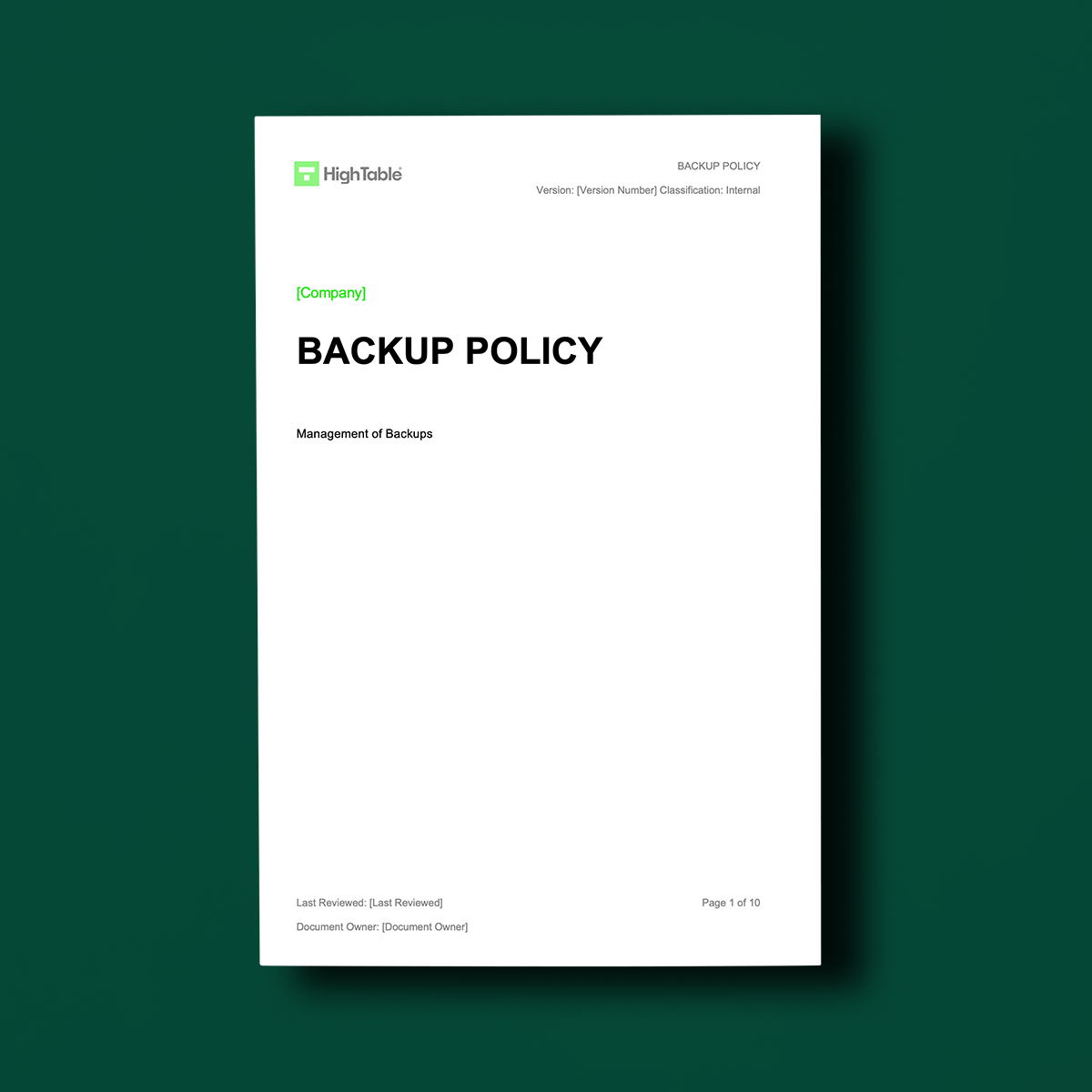
Why you need it
You need this policy to keep your business running smoothly no matter what. Without a good backup plan, losing data could be a disaster for your business. This policy helps you avoid costly downtime, protects your reputation with customers, and makes sure you can recover from a problem quickly and easily.
When you need it
You need this policy from the very start of your business. It’s not something you can just set and forget. You’ll use it regularly, for example, whenever you need to schedule a new backup or when you’re testing your ability to restore data. It’s a continuous process to keep your information safe.
Who needs it?
Everyone in your company who handles data should know about this policy, but your IT team or a designated person will be responsible for carrying it out. This includes people who manage servers, databases, and even your employees who save files on their computers.
Where you need it
This policy applies to all the places where you store your data. This includes your company’s servers, cloud storage accounts, and even individual laptops or tablets that have important information on them. It’s a rulebook that covers all your data, wherever it lives.
How to write it
Writing a good backup policy should be simple. Start by listing the types of data that need to be backed up. Then, specify how often you’ll back it up (daily, weekly, etc.) and where the backups will be stored (e.g., in a secure cloud service). Finally, explain how you’ll test your backups to make sure they work. Use simple language so everyone can understand it.
Time needed: 4 hours
How to write a backup policy
- Create your version control and document mark-up
ISO 27001 documents require version control of the author, the change, the date and the version as well as document mark up such as document classification.
- Document the purpose of the ISO 27001 Backup Policy
The purpose of the backup policy is to protect against loss of data and enable recovery from loss of data or systems.
- Set out the principle on which the ISO 27001 Backup Policy is based
The principle of the backup policy is that information is backed up securely in line with the:
• data retention requirements,
• business requirements,
• business continuity requirements and plans,
• business impact assessments, and
• legal and all legal and regulation legislation requirements. - Define the ISO 27001 Backup Policy Scope
The scope of the backup policy is a description of what is covered by the policy. A common scope example of the backup policy is organisation owned, managed and controlled information and systems that form part of systems and applications deemed in scope by the ISO 27001 scope statement including:
• Servers
• Databases
• Code Repositories
• Test Environments
• Development Environments - Set out the approach to backup restoration procedures
An example is that backup and restoration procedures are documented, in place and maintained.
- Explain the backup security controls
Set out the security controls that you have in place to protect the backups. Common examples of security controls include:
• Backups are encrypted using vendor built in encryption.
• Backups are stored in cloud-based solutions that as a minimum are ISO 27001 certified.
Where backup is to physical media
• The media is encrypted
• The media is labelled and stored securely on site with restricted, authorisation required perimeter access control.
• The media is transferred by and approved third party secure courier and stored in a remote secure location. - Set out the backup schedule
You will define the frequency of your backups and an example of backup schedule, retention schedule and testing schedule:
• Daily backups are maintained for 7 days.
• Weekly backups are maintained for 28 days.
• Monthly backups are maintained for 12 months. - Explain the approach to backup testing and verification
To ensure that backups can be used when they are needed and that they will work as intended you will explain how you do testing and verify that it worked. An example of this would be:
• Backups of systems are tested at least annually to ensure they can be relied upon in an emergency and meet the needs of the business continuity plans and business requirements.
• Backup logs are produced and checked for errors and performance at least weekly. Where errors are found corrective action is taken.
• Backup testing log reviews are recorded.
How to implement it
To put the policy into action, you’ll first choose your backup software or service. Then, you’ll set up a schedule for your backups. You’ll also need to train your team on their roles and do regular practice runs to make sure you can restore your data if you ever need to. This is a crucial step!
Examples of using it for small businesses
A small retail shop’s policy might state that all sales records are backed up to the cloud every night, and these backups are tested once a month to ensure they can be restored.
Examples of using it for tech startups
A startup building a mobile app might have a policy that all source code is backed up to a secure online repository every hour and that a full copy of the database is made daily.
Examples of using it for AI companies
An AI company’s policy might require that their massive data sets and machine learning models are backed up weekly to a separate, offline storage location to protect them from cyberattacks.
How the ISO 27001 toolkit can help
An ISO 27001 toolkit is a great shortcut. It includes all of the business continuity and back up documents that you need.
Information security standards that need it
This policy is a key part of ISO 27001, which is an international standard for managing information security. Other standards that need it include:
- GDPR (General Data Protection Regulation)
- CCPA (California Consumer Privacy Act)
- DORA (Digital Operational Resilience Act)
- NIS2 (Network and Information Security (NIS) Directive)
- SOC 2 (Service Organisation Control 2)
- NIST (National Institute of Standards and Technology)
- HIPAA (Health Insurance Portability and Accountability Act)
List of relevant ISO 27001:2022 controls
The ISO 27001:2022 standard has a specific control for this topic:
- ISO 27001 Annex A 8.13 Information Backup: This control is all about having a formal process for backing up your information. It ensures that you’ve identified what needs to be backed up, that you’re doing it regularly, and that you have a plan to recover the data.
ISO 27001 Backup Policy Example
An example of a real world ISO 27001:2022 Backup policy:
ISO 27001 Backup Policy FAQ
To protect your data from being lost.
Yes, if your laptop has important company data on it.
It depends on how often your data changes, but at least daily for most businesses.
A backup is a copy made specifically for recovery, and it’s part of a bigger plan.
No, you should store them in a different, secure location.
You could lose important data and face business downtime.
No, it’s a living document that you should continually use and update.
You should test them regularly, like once a quarter.
It’s how much data you can afford to lose.
It’s how quickly you need to get your data back.
No, one policy can cover all your systems.
It provides clear evidence that you are protecting your data, which is crucial for audits.
Yes, a backup process is a required control.
Identify all the data you need to back up.

